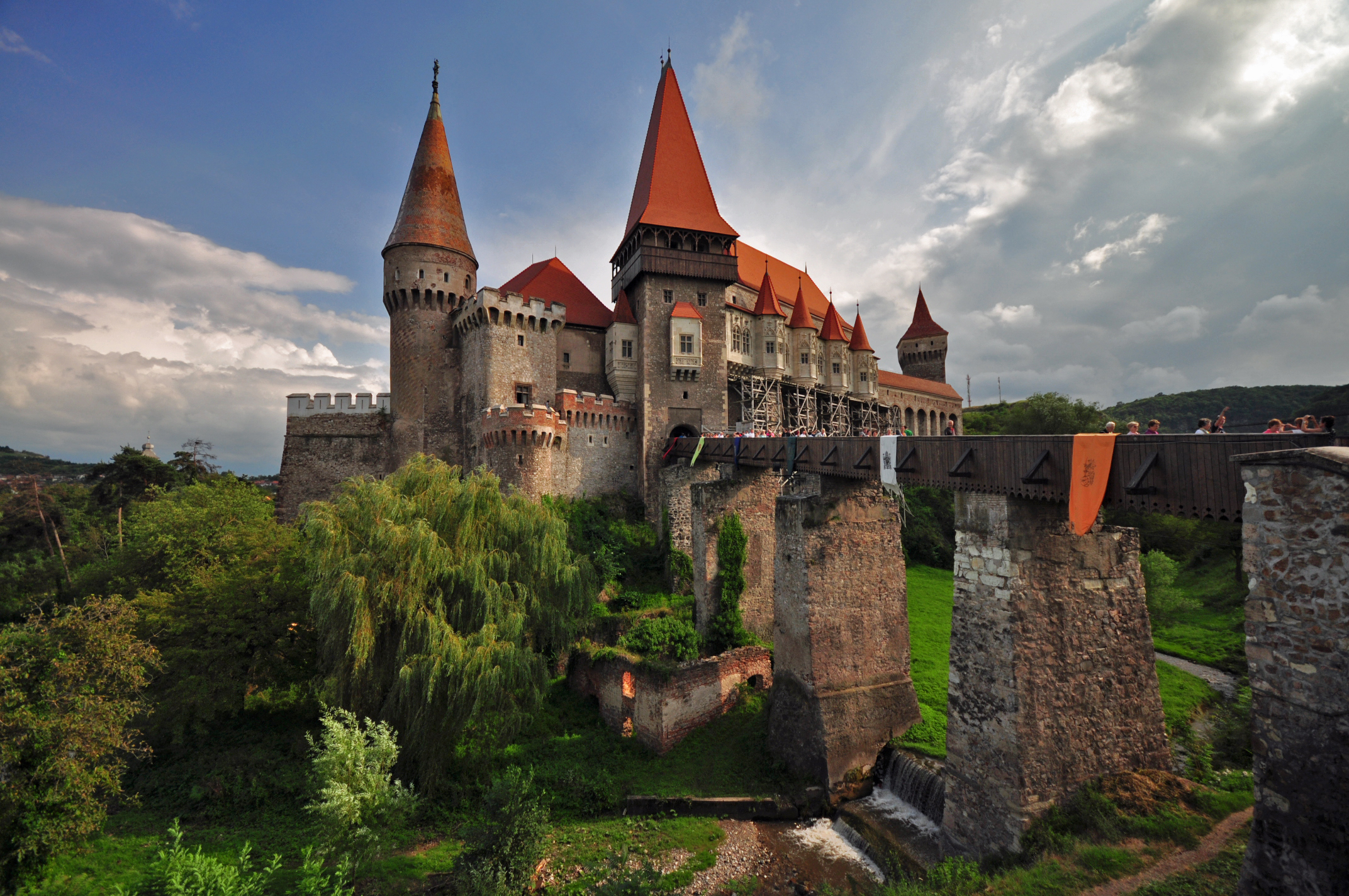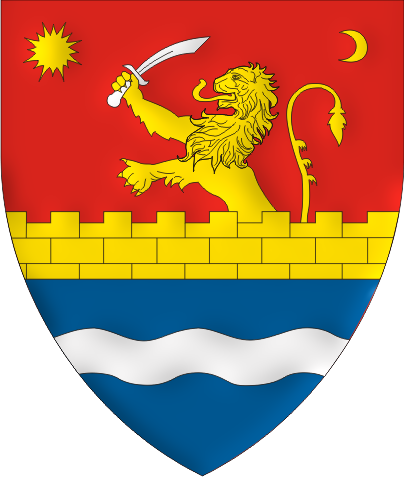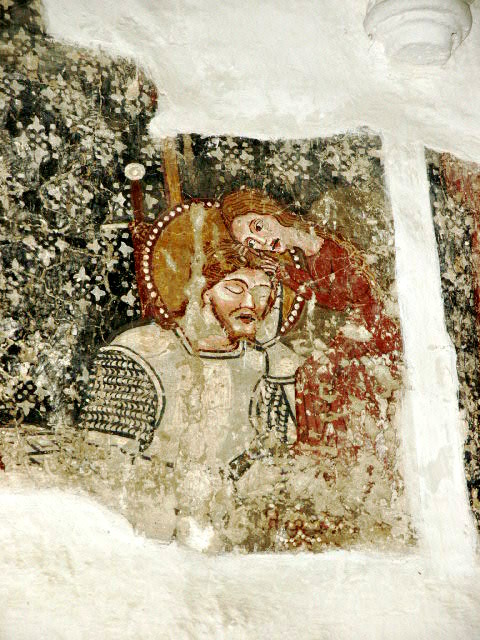|
Homorod, Brașov
Homorod (; ) is a commune in Brașov County, Transylvania, Romania. It is composed of three villages: Homorod, Jimbor (''Sommerburg''; ''Székelyzsombor''), and Mercheașa (''Streitfort''; ''Mirkvásár''). The commune is located in the northern part of the county, on the border with Harghita County, from the county seat, Brașov. It lies on the banks of the Homorod River, at the confluence of the Homorodul Mare and Homorodul Mic. Demographics At the 2021 census, Homorod had a population of 2,260; of those, 64.51% were Romanians, 19.69% Hungarians, and 5.22% Roma. At the 2011 census, the commune had 2,209 inhabitants, of which 49.3% were Romanians, 29.9% Hungarians, 18.4% Roma, and 1.2% Germans. At the 2002 census, 64.6% were Romanian Orthodox, 11.8% Evangelical Lutheran, 8.3% Roman Catholic, 6.5% Unitarian, 2.8% Reformed, 2.3% belonged to another religion, and 1.5% Evangelical of Augustan Confession. Natives * József Nyírő (1889–1953), Hungarian writer and polit ... [...More Info...] [...Related Items...] OR: [Wikipedia] [Google] [Baidu] |
Hunedoara County
Hunedoara County () is a county (''județ'') of Romania, in Transylvania, with its capital city at Deva, Romania, Deva. The county is part of the Danube–Criș–Mureș–Tisa Euroregion. Name In Hungarian language, Hungarian, it is known as , in German language, German as , and in Slovak language, Slovak as . The county got its name from the city of Hunedoara (), which is the Romanian language, Romanian transliteration of the Hungarian language, Hungarian (, archaic: ), old name of the municipality. That most likely originated from the Hungarian language, Hungarian verb meaning 'to close' or 'to die', but may also come from wear the name of the Huns, who were headquartered near for a time and were the first to establish solid rule over the land since the Dacians. Geography This county has a total area of 7,063 km2. Mainly, the relief is made up of mountains, divided by the Mureș River valley which crosses the county from East to West. To the North side there are the ... [...More Info...] [...Related Items...] OR: [Wikipedia] [Google] [Baidu] |
2011 Romanian Census
The 2011 Romanian census was a census held in Romania between 20 and 31 October 2011. It was performed by some 120,000 census takers in around 101,000 statistic sectors throughout the country established by the National Institute of Statistics (INS) of Romania. Preparations started already in 2009, and it was announced that the process would not end until 2014. Anyone who did not answer questions in the census questionnaire would be fined between 1,500 and 4,500 Romanian lei, although 4 of the 100 questions related to the respondent's ethnicity, mother language, religion, and possible disabilities were not mandatory. Preliminary results were released once on 2 February 2012 and again on 20 August 2012. The final definitive result of the census came out on 4 July 2013, showing that, among other things, Romania had lost 1,559,300 people since the 2002 census, consequently having 20,121,641 inhabitants. Some people like sociologist Vasile Ghețău, director of the Center of Demog ... [...More Info...] [...Related Items...] OR: [Wikipedia] [Google] [Baidu] |
Villages With Fortified Churches In Transylvania
The Transylvania region of Romania has one of the highest concentrations of existing fortified churches from the 13th to 16th centuries. It has more than 150 well preserved fortified churches of a great variety of architectural styles (out of an original 300 fortified churches). Listed as a UNESCO World Heritage Site, Villages with Fortified Churches in Transylvania are seven villages (six Transylvanian Saxons, Saxon and one Székelys, Székely) founded by the Transylvanian Saxons. They are dominated by fortified churches and characterized by a specific settlement pattern that has been preserved since the Late Middle Ages.Villages with Fortified Churches in Transylvania. UNESCO World Heritage Centre 1992-2010 The list The seven villages listed as a UNESCO World Heritage Site: ...
|
Tourism In Romania
In December 2024, Romania's tourism sector had a 6.8% increase in arrivals at accommodation facilities, including hotels, apartments, and renting, rental rooms, compared to December 2023. in authorized lodging facilities, marking increases of 4.5% over 2023 Overnight stays also rose by 4.9% during the same period. At border crossing points, Romania recorded 916,100 foreign visitor arrivals, while the number of Romanian residents traveling abroad reached 1,007,600. In 2024, the National Institute of Statistics (Romania), National Institute of Statistics reported that Romania recorded over 14 million arrivals in authorized lodging facilities, marking increases of 4.5% over 2023 and 7.7% compared to 2019, with overnight stays reaching 30.2 million. Early trends for 2025 continue to reflect strong domestic interest, particularly along the Romanian Black Sea resorts and in emerging sectors such as Ecotourism. The most visited cities are Bucharest, Constanța, Brașov, Timișoara, ... [...More Info...] [...Related Items...] OR: [Wikipedia] [Google] [Baidu] |
List Of Castles In Romania
This is a list of castles and fortresses declared monument istoric, historic monuments by Romania's Ministry of Culture (Romania), Ministry of Culture. Banat ; Caraș-Severin County, Caraș-Severin (6) * Bey's Fortress, Socolari * Caransebeș Fortress, Caransebeș * Cuiești Fortress, Bocșa * Ladislau Fortress, Coronini * Mehadia Fortress, Mehadia * Turk's Fortress (''Turski Grad''), Carașova ; Timiș County, Timiș (10) * Ciacova Fortress, Ciacova * Făget Fortress, Făget * Huniade Castle, Timișoara * Jdioara Fortress, Criciova, Jdioara * Karátsonyi Castle, Banloc * Margina Fortress, Margina * Castle of Count de Mercy, Sânandrei, Carani * Morisena Fortress, Cenad * Nákó Castle, Sânnicolau Mare * Timișoara Fortress, Timișoara Bukovina ; Suceava County, Suceava (3) * Șcheia Fortress, Suceava * Princely Fortress, Suceava * Seat Fortress of Suceava, Suceava Crișana ; Arad County, Arad (22) * Agrișu Mare Fortress, Târnova, Arad, Agrișu Mare * Fortress ... [...More Info...] [...Related Items...] OR: [Wikipedia] [Google] [Baidu] |
József Nyírő
József Nyírő (July 18, 1889 – October 16, 1953) was a Hungarian writer of popular short stories and novels; a politician associated with fascism who was accused of war crimes; and briefly a Catholicism, Catholic priest in Miluani. Biography Nyírő was born July 18, 1889, in the village of Székelyzsombor, Udvarhely County, Kingdom of Hungary (today Homorod, Brașov, Jimbor, Brașov County). He was ordained in 1912, taught theology in Nagyszeben (today Sibiu), and became a priest in 1915. He left the priesthood in 1919 and married, operating a grist mill for a time. He then found success publishing short stories in magazines and newspapers and worked as a journalist for 10 years. In 1931 he inherited a farm estate and took it over. Nyirő's political career is considered as controversial. He was a great admirer of Joseph Goebbels and was a member of the Fascist 'Arrow-Cross caucus' of the Arrow Cross Party. Nyírő joined the "''Europäische Schriftstellervereinigung''" (i.e ... [...More Info...] [...Related Items...] OR: [Wikipedia] [Google] [Baidu] |
Evangelical Church Of Augustan Confession In Romania
The Evangelical Church of the Augsburg Confession in Romania (, ) is a German-speaking Lutheran church in Romania, mainly based in Transylvania. As a Lutheran church, it adheres to the Augsburg Confession. Its history goes back to the 12th century when the Transylvanian Saxons arrived in the region, then part of the Kingdom of Hungary. The church has altar and pulpit fellowship with, but is distinct from, the Evangelical Lutheran Church of Romania, which is mainly Hungarian-speaking. It also cooperates with the Calvinist Reformed Church in Romania. History Beginnings The history of the Evangelical (Lutheran) Church in the territory of today's Romania finds its beginnings in the mid-16th century, through the humanist cartographer and reformer Johannes Honterus. Martin Luther's writings had been brought and spread in Transylvania as early as 1519, but the real reformation among the German Catholic population took place in 1542 (or 1543) with the publication of , Reforma ... [...More Info...] [...Related Items...] OR: [Wikipedia] [Google] [Baidu] |
Reformed Church Of Romania
The Reformed Church in Romania (; ) is a Calvinist denomination and the largest Protestant church in Romania. The majority of its followers are of Hungarian ethnicity and Hungarian is the main church language. The large majority of the Church's parishes are in Transylvania; according to the 2021 census, 495,380 people or 2.6% of the total population belong to the Reformed Church. About 95% of the members were of Hungarian ethnicity. The religious institution is composed of two bishoprics, the Reformed Diocese of Királyhágómellék and the Reformed Diocese of Transylvania. The headquarters are at Oradea and Cluj-Napoca, respectively. Together with the Unitarian Church of Transylvania and the two Lutheran churches of Romania (the Evangelical Lutheran Church in Romania and the Evangelical Church of Augustan Confession), the Calvinist community runs the Protestant Theological Institute of Cluj. Doctrine The church adheres to the: Creeds *Apostle Creed *Nicene Creed * ... [...More Info...] [...Related Items...] OR: [Wikipedia] [Google] [Baidu] |
Unitarian Church Of Transylvania
The Unitarian Church of Transylvania (; ), also known as the Hungarian Unitarian Church (; ), is a Nontrinitarian Christian denomination of the Unitarian tradition, based in the city of Cluj, Transylvania, Romania. Founded in 1568 in the Eastern Hungarian Kingdom by the Unitarian preacher and theologian Ferenc Dávid (c. 1520–1579), it is the oldest continuing Unitarian denomination in the world. It has a majority- Hungarian following, and is one of the 18 religious denominations given official recognition by the Government of Romania. The Transylvanian and Hungarian Unitarians represent the only branch of Unitarianism not to have adopted a congregationalist polity, and remains quasi- episcopal; the Irish Non-subscribing Presbyterian Church, a distinct body closely related to Unitarianism, has a presbyterian structure.Paul F. Bradshaw, ''The New SCM Dictionary of Liturgy and Worship'', SCM-Canterbury Press Ltd, London, 2002, p.460. The Unitarian Church of Transylvania is ... [...More Info...] [...Related Items...] OR: [Wikipedia] [Google] [Baidu] |
Roman Catholic
The Catholic Church (), also known as the Roman Catholic Church, is the largest Christian church, with 1.27 to 1.41 billion baptized Catholics worldwide as of 2025. It is among the world's oldest and largest international institutions and has played a prominent role in the history and development of Western civilization. O'Collins, p. v (preface). The church consists of 24 ''sui iuris'' (autonomous) churches, including the Latin Church and 23 Eastern Catholic Churches, which comprise almost 3,500 dioceses and eparchies around the world, each overseen by one or more bishops. The pope, who is the bishop of Rome, is the chief pastor of the church. The core beliefs of Catholicism are found in the Nicene Creed. The Catholic Church teaches that it is the one, holy, catholic and apostolic church founded by Jesus Christ in his Great Commission, that its bishops are the successors of Christ's apostles, and that the pope is the successor of Saint Peter, upo ... [...More Info...] [...Related Items...] OR: [Wikipedia] [Google] [Baidu] |
Evangelical Lutheran Church Of Romania
The Evangelical Lutheran Church of Romania (; ; ) is a Lutheran denomination in Romania. Many active congregations were founded over 450 years ago, and today the Church has 27,540 members. It is primarily a Hungarian-speaking denomination, with one deanery for Slovak-speaking parishes. This church is not to be confused with the mainly Saxon, German-speaking Evangelical Church of the Augsburg Confession. See also *Religion in Romania * Freedom of religion in Romania *Romanian Orthodox Church * Romanian Evangelical Alliance *Evangelical Church of Romania *Catholic Church in Romania Romanian Catholics, like Catholics elsewhere, are members of the Catholic Church under the spiritual leadership of the Pope and Roman Curia, Curia in Rome. The administration for the local Latin Church is centered in Bucharest, and comprises two ... References External links Official website Hungarian organizations in Romania Lutheranism in Romania Lutheran World Federation members ... [...More Info...] [...Related Items...] OR: [Wikipedia] [Google] [Baidu] |
Romanian Orthodox
The Romanian Orthodox Church (ROC; , ), or Romanian Patriarchate, is an autocephalous Eastern Orthodox church in full communion with other Eastern Orthodox Christian churches, and one of the nine patriarchates in the Eastern Orthodox Church. Since 1925, the church's Primate has borne the title of Patriarch. Its jurisdiction covers the territories of Romania and Moldova, with additional dioceses for Romanians living in nearby Ukraine, Serbia and Hungary, as well as for diaspora communities in Central and Western Europe, North America and Oceania. It is the only autocephalous church within Eastern Orthodoxy to have a Romance language for liturgical use. The majority of Romania's population (16,367,267, or 85.9% of those for whom data were available, according to the 2011 census data), as well as some 720,000 Moldovans, belong to the Romanian Orthodox Church. Members of the Romanian Orthodox Church sometimes refer to Orthodox Christian doctrine as ''Dreapta credință'' ("right ... [...More Info...] [...Related Items...] OR: [Wikipedia] [Google] [Baidu] |





